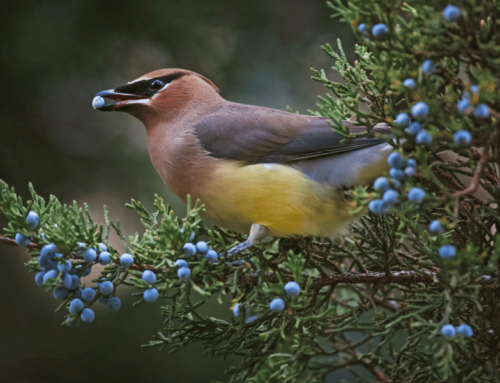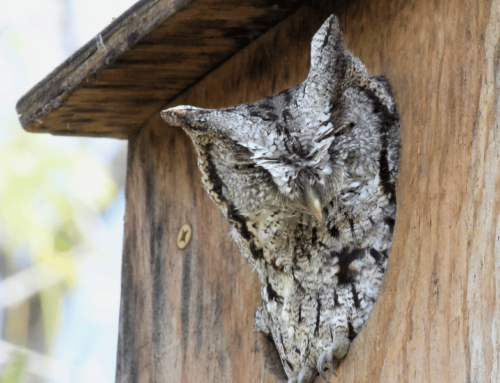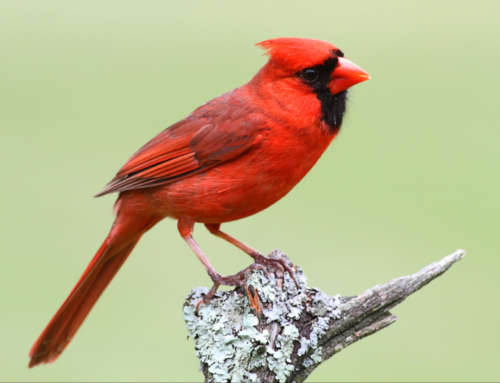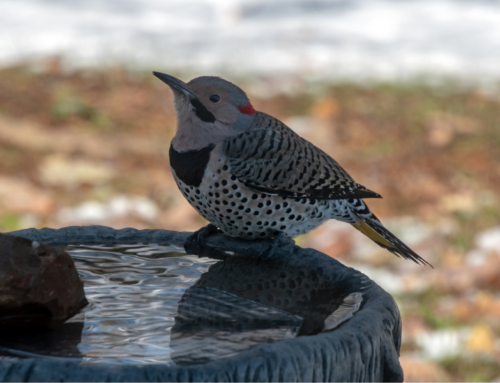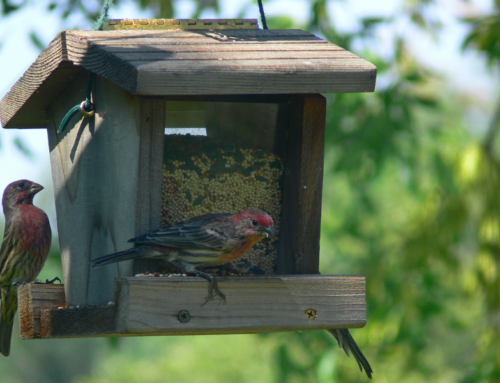In the western United States, there are lots of amazing birds that you can see in your backyard birding hobby. However, there are some birds that are much more common to see than others. It’s a good idea to get acquainted with the more common types of birds you will see in your backyard if you live in or visit the western half of the United States. This blog entry will cover states that are west of Texas.
This blog is all about common backyard birds you’ll see in the western United States.
Backyard Birding Tips for Common backyard birds in the western United States
1. House Sparrow

If you’re into backyard birding at all or birdwatching more generally, you are probably already familiar with this bird. It is in fact, among the most widespread birds in the world. Like many other species, the house sparrow has become well-adapted to life in close proximity to people. They can be found in suburban and urban parts of metropolitan areas. Frequently, they are seen in urban areas hopping around parking lots or other developed areas, eating discarded and leftover food from people.
The house sparrow is an introduced and invasive species to North America. There is some dispute among ecologists and ornithologists about the pros and cons of this species on the continent. Some argue it controls pests. Others focus on how it can out-compete native species for food.
They primarily feed on seeds but will also opportunistically feed on insects. Their adult size is usually around half a foot.
Getting these birds to your backyard won’t prove a difficult task. They are almost everywhere in the western United States. Any amount of food and water will have house sparrows showing up to drink and eat.
The above picture shows the difference between a female (left) and male.
2. Mourning Dove

The mourning dove is another common bird that can be seen throughout the western United States. It can be seen year-round in this region. The house sparrow is the most widespread bird in the world, but the mourning dove is the most common bird in North America. Like the house sparrow, you likely see this bird with some frequency already. They can be spotted walking on the ground, where they eat seeds.
Mourning doves feed almost exclusively on seeds. If you put up bird feeders with a variety of seeds, this will attract mourning doves. There are however, some seeds that they prefer over others. Corn, sunflower seeds and rapeseed are among their preferred types.
Although they are very common normally, if you want to attract more of them to your backyard, get some of their favorite seeds and throw them on the ground.
3. American Robin

The American Robin is an iconic bird that is associated with suburban North America. The American Robin is commonly seen in lawns, backyards and other open areas where they can find and eat earthworms. They can be recognized by their distinct orange-colored breast. The robin’s singing is associated with the beginning of spring.
If you have a lawn in your backyard, the American robin can be seen in the aftermath of rain, when worms will work their way to the surface.
You can increase the number of American robins in your backyard by buying and placing dried mealworms and seeds on a platform bird feeder.
4. Rock Pigeon

The rock pigeon is a common, introduced species of bird that many view as a nuisance. They can eat leftover and discarded food in urban areas, where they are commonly seen. The rock pigeon is relatively big compared to other common backyard birds, getting up to 15 inches (37 centimeters).
Attracting rock pigeons is not difficult and it’s possible that they are already visiting. Rock pigeons will eat lots of different kinds of foods, including food meant for people. Like the mourning dove, rock pigeons eat food off the ground. Having seeds or anything edible on the ground in your backyard can attract them.
Note: rock pigeons are a known vector for the bird flu. Although it’s not very contagious, it’s very deadly and you should keep your distance if you are worried about catching it.
5. Common Starling
The Common Starling was introduced to the United States by people who were fans of William Shakespeare, as Shakespeare referenced the bird in his works. Its original range extends from western Europe to parts of the Middle East and north Africa.
This bird is black, purple and green with white spots. Their plumage also exhibits iridescence. They are a medium-sized perching bird that rarely exceeds 9 inches (22.9 centimeters) in length.
Although common starlings mostly eat insects, spiders and worms, they will also eat fruit, grains and seeds. They are known for their aggression to other birds, so attracting them to your backyard might not be desirable.
Fun fact:
The common starling is capable of incredible vocal mimicry. This is why Shakespeare was so interested in them. Listen to this common starling do an impression of R2D2 from Star Wars in the above video.
6. Northern Cardinal

The northern cardinal is a widespread bird in the western United States. They are a popular bird for backyard birding due to the male’s bright red appearance. The females look much drabber with only light brown plumage by comparison. They don’t migrate in the winter, making them an easy bird to spot against a white, snowy background.
Getting more northern cardinals to your backyard won’t be too difficult if they are common to your area. Like a lot of common backyard birds, they will show up if you provide seeds and grain. There are bags you can buy at the pet store or online that specifically designed for northern cardinals. Another option is to use safflower and sunflower seeds in your feeder.
7. American Crow

The American crow is among the smartest birds you can find in the western United States. They can be found as far north as Alaska. Intelligence tests put them as among the smartest animals in the world. They are year-round inhabitants in the western states. They are popular in backyard birding as their smart and inquisitive nature can be more interesting to observe than less intelligent birds.
They are an entirely black bird that can be easily confused with the common raven, which is in the same family. To tell them apart, remember that American crows are smaller (21 inches compared to 28 inches for the raven). When flying at a distance, ravens can be differentiated by the diamond shape of their tail feathers. There’s also the “caaw-caaw” call of the crow that ravens don’t have.
American crows are not picky eaters as they are among birds that will eat garbage. You can attract them to your backyard with lots of different foods including berries, seeds, grain and peanuts. They will also show up in your backyard to look for worms, frogs, insects and spiders to eat.
8. House Finch

The house finch is a common, small perching bird that is a common visitor to backyard birding feeders and baths. They are currently widespread enough that they’re numbers have been estimated to exceed 1.5 billion in North America. It’s small, not getting over 6 inches (15.2 centimeters) in length and can be recognized by the pink/red coloration on their neck, shoulders and head for the males. The rest of their bodies are light brown. The females are almost the same but without the pink/red colors.
To see more of them in your backyard birding, make sure you have sunflower seeds in your feeder.
9. Downy Woodpecker

The downy woodpecker is a common woodpecker in much of the western United States, except for the southern parts of Arizona, New Mexico and Texas. It’s a year-round inhabitant everywhere else in America’s western half.
They are small in size and can be recognized by their black and white coloring over their body with the exception of the red spot on back of their heads. Their appearance is similar to the hairy woodpecker but smaller on average.
Downy woodpeckers like suet feeders, so buy one if you don’t already have one. They like eating sunflower seeds and peanuts.
10. Anna’s Hummingbird

No list of backyard birds would be complete without a hummingbird! This species can be found in Arizona, New Mexico and throughout the west coast. Like other hummingbirds, they stay small, not reaching over 11 centimeters (4.3 inches). The males can be identified by their red crown and red upper breast.
For more Anna’s hummingbirds in your backyard, you can plant more flowering plants. They mostly feed on nectar but also eat small insects. If you don’t have much of a green thumb, you can instead buy a hummingbird feeder, which you can fill with sugar water.
Conclusion:
These birds are all likely visitors to your feeders, baths and other parts of your backyard if you live in the western United States. This list is not definitive. There are other birds that will commonly show up in your backyard in this part of the country but this post covers the more common ones. Look into which ones are native to your state and put out the correct food along with water.

